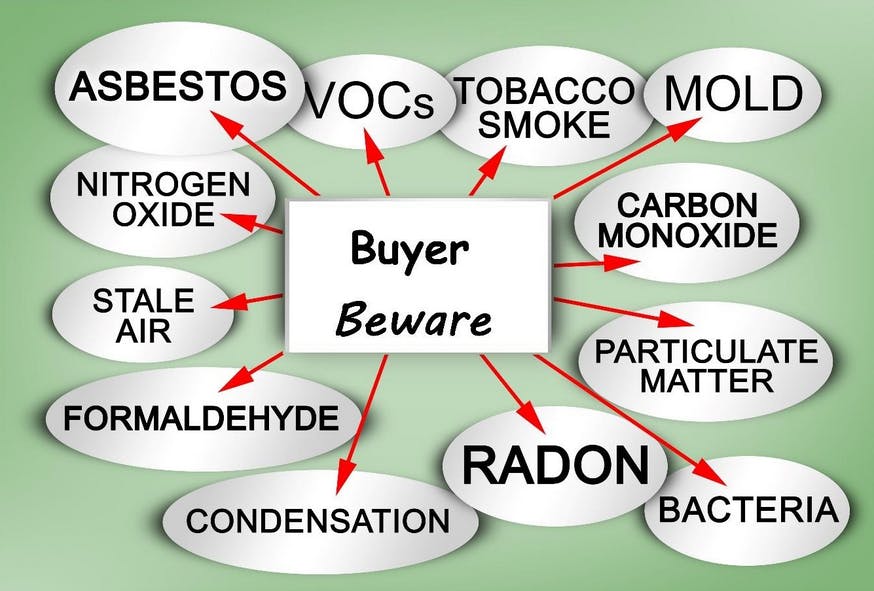There is often anticipation when visiting a residence in search of a dream home. Buyers tend to use their eyes to first capture the excitement of exploring rooms and discovering their features.
What visitors may be missing, however, are the sounds, smells and other sensory aspects of the home that may go unnoticed until after having moved in. Instead of letting their eyes do all the work, buyers should take an all-senses approach when touring a home.
Sight will naturally capture the most detail about a home. How is it laid out? Are there any potential safety hazards? Is the kitchen up to date?
The eyes can also help find less noticeable items, including chipping paint, uneven flooring, or possibly cracks emanating from windows and doors. But there is more to “see” than with the eyes.
It’s only natural to speak to your partner/spouse or real estate broker while touring the home but it’s wise to hold many of those thoughts until leaving the property. That is because some owners are eavesdropping (yes, that’s a thing) but, just as important, it gives all visitors a chance to listen to the “bones” of the house.
Do “the four walls” squeak and creak or are they as silent as a mouse? Are there sounds of a running toilet or drips from under the sink or showerhead? (Speaking of mice, yes, look for droppings from critters too!)
If possible, buyers should visit the neighborhood at different times to get a fuller picture of potential noise issues. Are train tracks nearby with loud locomotives sounding their horns early in the morning? Do cars race along the street late at night? Is there a nightclub nearby?
Let your nose go on a journey too. Does the home have a heavy scent of deodorizer or air fresheners? Are open boxes of baking soda or kitty litter strategically placed around certain rooms? That may be to mask – or absorb – an underlying issue of cigarette smoke, pet urine, mildew or a combination of odors. If something smells of bleach, then ask questions of your broker to determine why there is a “hospital smell” instead of one that is fresh and fragrant-free.
We are told not to touch handles, switches and knobs while trying to keep Covid at bay. Go ahead and employ your sense of touch to feel for possible issues – just use gloves, a handkerchief or tissue as a barrier between your and the items. If you see something that piques your curiosity – damp pipes, blurry windows or quirky dimmer switch – then check it out and make a mental note to have your broker investigate it further. Even turn on kitchen and bath faucets to test the water pressure. Why not? You don’t want to learn of poor shower pressure after paying top dollar on the home!
Naturally, you may have a home inspector check the water pressure or issues with the mechanical and electrical systems, but it cannot hurt to review items should you wish to rule out the home before requesting a costly inspection. (A buyer should not formally inspect the home without getting the okay from sellers.)
Some buyers go the extra step and bring an empty water bottle. Why? To fill it from the kitchen sink and taste for impurities or unusual smells. Tap water can be tested for health and safety benefits but it makes sense to take an initial taste when first visiting a potential future home.
Trust your senses: Let your eyes, nose, ears and mouth capture all aspects of the property. It only makes sense!
Protecting you and your loved ones from items in the home that you can see, taste and touch is one thing. What about invisible threats?
No, we are not talking about the unexplained occurrences of the paranormal (though I could tell you a couple of tales on the topic some day). This is more about what you often cannot hear, taste or smell.
It’s a fact that lead paint, asbestos and radon can be found in and around homes. People, sadly, die of their effects every year.
Lead in house paints was banned from residential home use in the late 1970s but that doesn’t mean it is no longer present. If the home is 44 years or older, then it may have lead paint somewhere. What to do? Usually nothing, say the experts.
Asbestos was used heavily in home construction – for flooring, drywall, ceiling treatments and insulation – until the 1980s. (Even though the Clean Air Act of 1978 banned asbestos in residential properties, businesses were allowed to use their remaining inventory in home remodeling and new construction until it was exhausted.) There are different remedies to remove the product. Some items are better left untouched while others can require thousands of dollars to professionally remedy.
Radon is a colorless, odorless radioactive gas that is generated naturally from the ground and estimated to be a contributing factor in about 21,000 deaths every year in the U.S. The gas can seep through a home’s foundation and become concentrated in enclosed areas. Radon tests can help determine whether the gas is in the air and mitigation systems can run about $1000.
So, as you can see – and taste, smell and hear – a home is far more than what your eyes tell you.




